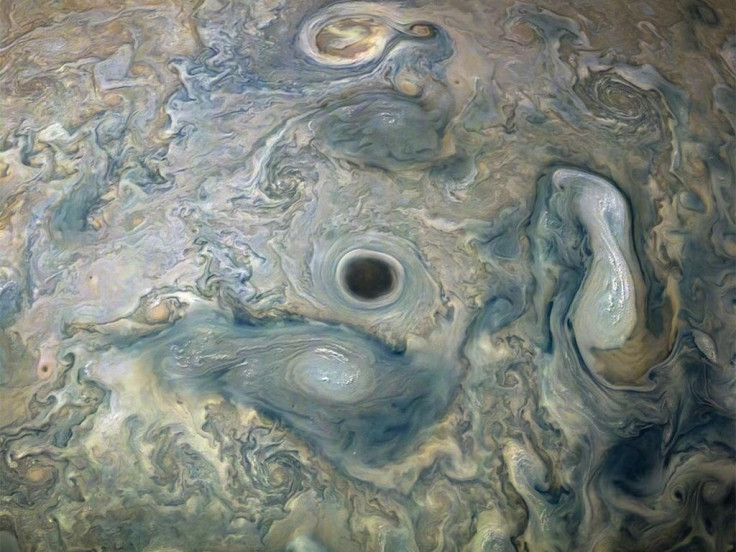NASA Explains Mysterious Photo Of Jupiter's Abyss, An Unusual Dark Vortex

NASA’s Juno space probe captured an amazing photo of a mysterious vortex with a dark hole in Jupiter. Although the space agency is still unsure of what the vortex’s dark center really is, it offered a possible explanation regarding its true nature.
Dubbed as the Jupiter Abyss, the image of the dark center was first captured by Juno during its 20th flyby of Jupiter. Flying at about 9,200 miles from the planet’s surface, the space probe scanned Jupiter and took photographs of its landscape. The original images were first taken by the space probe on May 29, according to NASA.
The exact image of the Jupiter Abyss was discovered by citizen scientists Sean Doran and Gerald Eichstadt using the data from the space probe’s JunoCam imager. After enhancing the images, the scientists were able to make the surprising discovery.
According to NASA, the image shows a vortex within a Jovian jet stream. At the center of the vortex is an intensely dark hole. The surrounding area shows high-altitude clouds highlighted by sunlight.
The space agency has not yet offered an exact explanation as to what the black spot really is. NASA speculated that it may actually be a deep hole that only became visible due to the contrasting movements of dark and light features on the planet.
“Surrounding cloud patterns show the Abyss to be at the center of a vortex,” NASA explained in a statement. “Since dark features on Jupiter’s atmosphere tend to run deeper than light features, the Abyss may really be the deep hole that it appears.”
Aside from NASA’s current theory, the Jupiter Abyss could also be related to Juno’s previous discovery regarding the planet’s fluctuating magnetic fields. NASA explained that the planet’s deep atmospheric wind patterns are causing changes to the magnetic field of Jupiter.
The space agency noted that further studies on Jupiter and the Abyss are yet to be conducted in order to determine what the vortex’s dark center really is. Hopefully, NASA will be able to collect more information through Juno’s next pass on Jupiter, which is scheduled to happen on July 21.
© Copyright IBTimes 2024. All rights reserved.





















